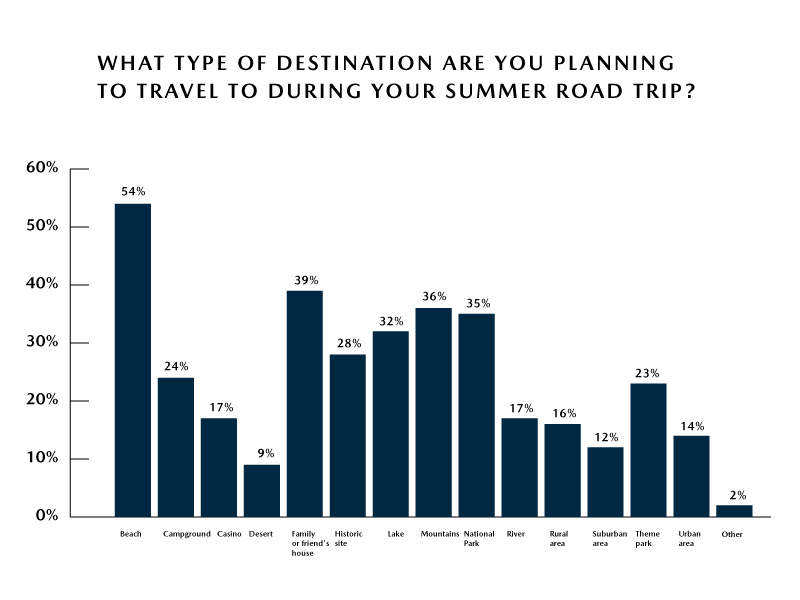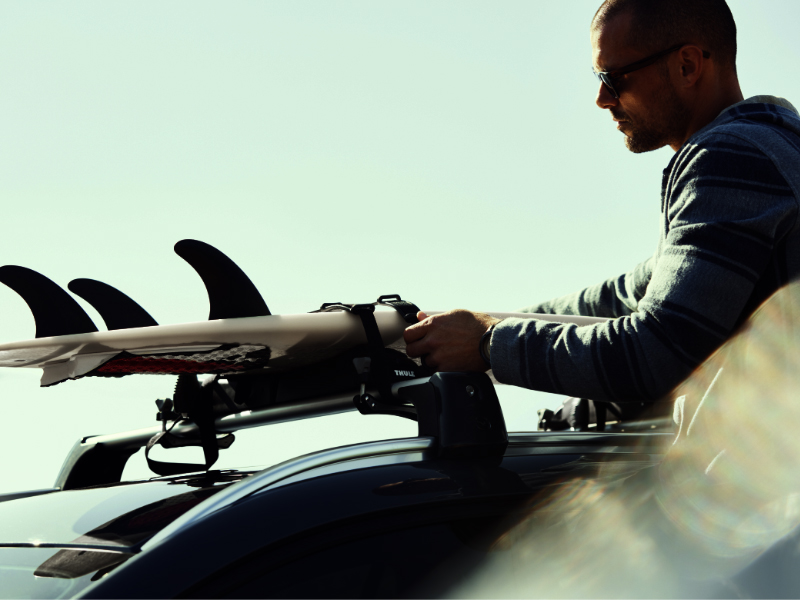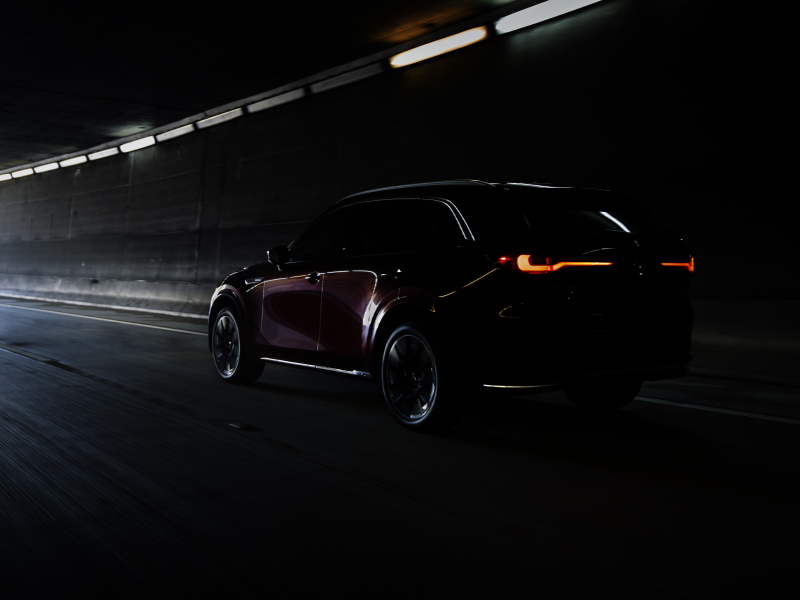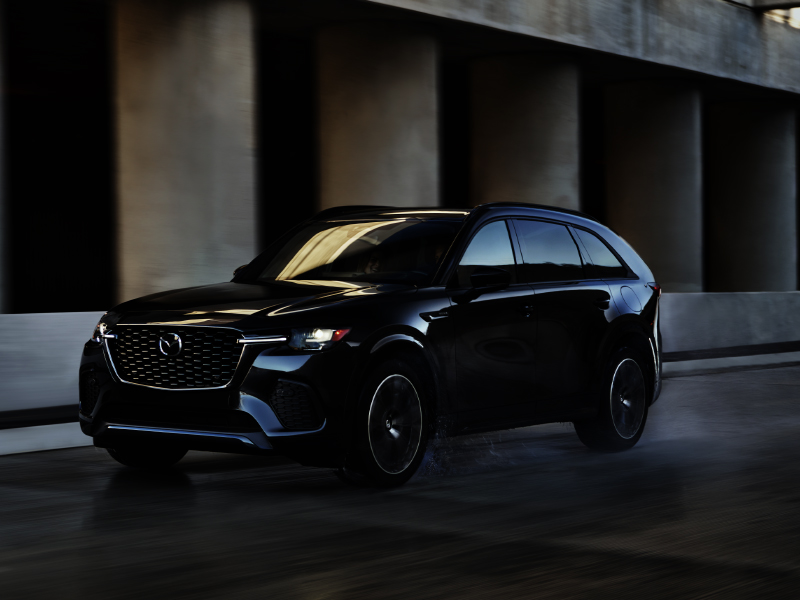7 Essential Beach Car Features for Fun in the Sun

Beaches have drawn people to them as vacation hot spots for centuries, for everything from their romantic effects to the simple experiences like bounding into a wave, perfecting a sandcastle (or tan), and catching dinner. Add to that allure the fact that no two beaches are alike. They’re like fingerprints — every one of them is different, so what makes a frosty Michigan or New England beach trip fantastic won’t be the same for an adventure on Daytona’s sandy expanses.
To that end, when you drive to the beach — or onto it — where your beach is located and who you take with you will determine what counts as the best beach “buggy” for that trip.
Jump straight to our list of vehicle features for a beach-friendly ride
And the number of people who will be making those determinations is likely very high. When Mazda conducted a survey of roughly 2,500 Americans, going to the beach as the destination was selected 54% of the time.

In fact, beaches were the #1 destination across generations, area of origin, and regardless of whether or not respondents had kids at home.
Here’s what you need to know about maximizing your time at the beach in terms of the vehicle you’re using to get there, as well as some recommendations for how to take care of your ride before and after your next beach adventure.
What is the best vehicle for driving to the beach?
Two rough vehicle categories are especially ideal for the beach: convertibles and “something roomy,” typically SUVs.
Convertibles, like the Mazda MX-5 Miata, allow drivers to start enjoying the outdoors early, which is perhaps why California’s Pacific Coast Highway and Florida’s Overseas Highway sometimes seem awash in convertible rental cars.
Roomy vehicles, on the other hand, help cart all the stuff — umbrellas, chairs, coolers, beach bags, sound systems, grills, toys, etc., etc. — that can come with a sojourn near the ocean. Because, as it turns out, bikinis and speedos may be the only “skimpy” thing about going to the beach.
What is the best vehicle for driving on a beach?
Driving on a beach is best done in a vehicle with either AWD or 4WD and deliverable power. If you’ve walked on a beach or a volleyball sand court, you know it takes more effort than walking on hard-packed pavement. The majority of beaches are not hard-packed, making AWD and 4WD vehicles ideal.
Essential beach vehicle features
Regardless of the beach you intend to drive on or to, it’s important to keep in mind that there is no absolutely 100% perfect vehicle. For example, lightweight vehicles are great for the sand, but they’re likely not overly roomy and comfortable. With that caveat out of the way, here are a few things that tend to ease driving on the beach.
1. Adequate power
Sand sucks up power, so reserves are handy. The more your car weighs, the more power it will need to cross a sandy beach. That doesn’t necessarily mean you need the largest engine available — a responsive transmission (or one that allows you to shift manually) combined with a moderate engine can work just as well as a big engine and transmission programmed primarily for fuel economy. Different drive modes, which set operating parameters for particular terrain, are also helpful. If your vehicle doesn’t offer a “sand” option, “sport” will likely be a good choice.
2. AWD or 4WD
Driven wheels tend to move forward and “climb” up on top of the sand, whereas “non-driven” wheels are more likely to sink into the sand due to the vehicle’s weight. AWD and 4WD vehicles distribute power to all four wheels, helping to keep all the tires moving at the same speed and above the sand. This prevents the rear wheels from dragging or the front wheels from building up mounds of sand in front of them.
3. Ample cargo space
As mentioned, a quick drive to catch the sunrise or sunset doesn’t require much in the way of packing, but most other adventures to the beach inevitably involve more: more coolers, umbrellas, folding chairs, compact BBQs, towels, toys, inflatables, changes of clothes and shoes, and… well, you get the idea. Having the room to carry and access all this without removing half of it first, as well as the ability to keep it out of the sun and under a cover (because, like it or not, theft happens) will make the trip more fun and worry-free.
4. Roof rails
Not everyone wants or needs to put a surfboard or kayak on their vehicle’s roof, but people taking long road trips to the coastline may benefit from a cargo pod. Roof rails make all the above easier. There’s also the option to put a roof tent on your vehicle, allowing you and yours to stay dry even if the sand is soaking. This is why roof rails may quote multiple load ratings — a “dynamic” one that applies to the vehicle in motion, and a “static” rating for when the vehicle is parked.
5. Adequate tires
In many cases, a less aggressive, pavement-oriented tread is better for sand because a tire designed for digging through mud or snow also digs through sand. (Usually, there’s just more sand beneath it). Tires with smoother treads will help keep the tire on top of soft sand and your car moving forward. Additionally, a smaller-diameter wheel and more generous tire sidewall allow for more flexible cushion and the ability to lower air pressure for better “flotation.” Just remember to make gentle pedal and steering inputs while driving on the sand, and to pump them back up before driving on the street.
6. Towing capabilities
Towing on a beach is not easy. Very generally, it requires abundant power and plenty of tire on the tow vehicle. However, a towing package may prove beneficial in other ways. For example, a hitch is a handy place to carry bikes or a small cargo rack for light but awkward items that don’t fit inside your vehicle. Tow packages also usually include maximum powertrain cooling, a boon for driving in the sand, where fuel consumption can vary.
7. Visibility
While many beaches seem like broad, open expanses, you’re bound to encounter pits in the sand, leftover fire rings, pallets, etc. These potentially hidden surprises make driving a vehicle with a low cowl and excellent forward visibility a plus.
Tips for driving on the beach
Here are some general tips if you plan on taking your vehicle off the road and onto the beach during your next vacation:
● Unless posted otherwise, assume that driving on a beach is similar to inside a city, wherein pedestrians (moving or not) have the right of way. Reasonable speed limits apply.
● Always follow any posted restrictions that tell you where you can enter and leave the beach.
● Treat vegetation like you would that on a hiking trail — respectfully.
● Be a considerate driver by trying to drive quietly, not scatter sand, and avoid cruising under fishing lines, etc., when around others.
● On saltwater beaches, be aware of tides; the “road” you drive in may not exist hours later.
In terms of awareness of beach conditions, keep the following safety tips in mind:
● Changes in color indicate a change in condition or surface — a dark spot surrounded by light sand may indicate a recent sandcastle excavation.
● As you approach the waterline, the surface will get damper and firmer, and easier to drive on, but you will also need to increase your focus on scanning for surf activity and potential problems “hidden” underwater or in dark sand.
● Know your terrain and drive carefully. Know where and when driving off-road is permissible.
● Your traction is naturally diminished on the sand. You may be near water, where you may face additional challenges maintaining control of your vehicle.
● Drive carefully and know your and your vehicle’s limitations.
And finally, some beach driving tips include:
● The key to driving on soft surfaces like sand is gentle control inputs — smooth, easy turning of the steering wheel and squeezing pedals like there’s a fruit underneath that you don’t want to crush.
● Brakes are hardly needed as sand will stop most cars once you lift off the accelerator. So, you can avoid the brake pedal.
● Note that if you do need to stop it will take longer. If you have antilock brakes, they may activate, which can be surprising if you’ve never felt them working before.
● If you have the option, stop your vehicle at a slight angle, as doing so makes it easier to get going again than on level ground.
● Avoid driving sideways up or down banks or dunes unless you’ve had plenty of practice.
● Consider specialized tires for beach driving, appropriate drive modes, and reducing the air pressure in your tires to help improve traction.
Car care tips for before and after beach travel
What to do before the beach
● You can protect your vehicle’s paint via waxing, sealing, or by applying a ceramic coating. Taking these steps can also make it much easier to clean your car afterward and will limit how much sand sticks to it.
● Get accustomed to using only the door and hatch handles to open and close the doors on your vehicle, as pressing anywhere else on the paint could create minor scratches.
● A good set of wiper blades and a full windshield washer reservoir will make easier work of removing salty air and seagull remnants.
● If you haven’t done so recently, a quick fluid level check under the hood is always a good idea before any trip, no matter the destination, as if making sure that your spare tire — if you have one — is properly inflated.
● Consider purchasing a set of non-porous, all-weather floor mats. If you don’t have these or have the inclination to buy them, some floor mat shapes can be turned over to reveal a rubberized bottom. If not, dedicate a towel or sheet to every footwell but the driver’s… it’s much easier to avoid getting sand on the floor in the first place than to remove it.
What to do after the beach
● Give your car a thorough wash. Rinse your vehicle first and make sure to hose off underneath your vehicle and around the tires — you don’t want to leave salt and sand on any part of your car.
● Gently remove floor mats (or the towels or sheets you had on the floors) and shake them out away from the car.
● Thoroughly vacuum your vehicle. Tug on seat cushion seams when you vacuum to clean out the wear points.
● If, at any point, you had the wheels in salt water, consult your mechanic about a brake fluid change.
Best Mazda SUVs for beach trips
Mazda CX-5 (2025)
Cargo Space: 29.1-59.3 cu ft
Drivetrain: 187-hp 4-cylinder, up to 256-hp 4-cylinder turbo
The compact Mazda CX-5 blends a sophisticated fun-to-drive chassis and available turbo power for the winding road to the beach, with standard all-wheel drive and room for a family of five to make the most of the visit.

Mazda CX-30 (2025)
Cargo Space: 20.2-45.2
Drivetrain: 191-hp 4-cylinder, up to 250-hp 4-cylinder turbo
The Mazda CX-30 marries standard all-wheel drive and crisp driving manners with sub compact size and dimensions for zipping through crowded coastal towns and parking lots. While up to 250-hp turbocharged engine is available, moderate weight means you don’t necessarily need it to hit the beach in comfort and style.

Mazda CX-50 (2025)
Cargo Space: 31.4-56.3 cu ft
Drivetrain: 187-hp 4-cylinder, or up to 256-hp 4-cylinder, turbo
The Mazda CX-50, and CX-50 Hybrid are built for getting outdoors or getting around town with equal aplomb. Mi-Drive modes, standard all-wheel drive, room for five, and over 30 cubic feet of cargo volume behind the seats means nobody's toys are left behind.

Mazda CX-90 (2025)
Cargo Space: 14.9-75.2 cu ft
Drivetrain: 280- and up to 340-hp I6 turbo mild hybrids, up to 323-hp PHEV
With a flexible three-row interior and plenty of power, the Mazda CX-90 is road-trip ready, set to cruise the beach during the day and dress up for a night on the town. Whether you're driving the mild or plug-in hybrid, the CX-90 delivers engaging performance a step up from the ordinary.

Mazda CX-70 (2025)
Cargo Space: 39.6-75.3 cu ft
Drivetrain: 280- and up to 340-hp I6 turbo mild hybrids, up to 323-hp PHEV
The Mazda CX-70 comfortably carries five adults and nearly 40 cubic feet of cargo anywhere you want to take it, yet it’s tailored enough to ply crowded coastal villages and winding byways with style and grace. Like the CX-90, the CX-70 is available with a mild hybrid or plug-in hybrid powertrain.
Looking for a beach vehicle that’s not an SUV?
While an SUV is handy for beach adventures, it’s not a requirement. A Mazda3 hatchback has cargo room relatively comparable to the Mazda CX-30, but in a lighter, nimbler, more fuel-efficient package, and all-wheel drive is still an option. For getting to the beach or driving along it, the Mazda MX-5 Miata two-seat roadster is a top-down favorite, an economical way to enjoy the best roads and nature’s best.
Take your next beach adventure in a Mazda vehicle
With a Mazda, you don’t have to give up the daily practicality, comfort, and driving enjoyment when you go to the beach or on your other adventures. Ready to explore the Mazda beach-ready lineup firsthand?
● Shop and build your next Mazda vehicle online.
● Locate a dealer near you and embark on your next adventure with confidence and style.
● Schedule a test drive today to immerse yourself in the performance, comfort, and safety
features that set Mazda vehicles apart.
Methodology and Definitions
The findings presented in this article are the result of a February 2024 study of 2,523 U.S. adults. (Confidence Level: 95%, Margin of Error: 2%) Age Cohorts (based on Pew Research Definitions)
● Baby Boomers: 1946-64
● Gen X: 1965-80
● Millennials: 1981-96
● Gen Z: 1997-2012
Regions (based on U.S. Census Regions)
● West: Arizona, California, Colorado, Idaho, Montana, New Mexico, Nevada, Oregon, Utah, Washington, Wyoming
● Midwest: Iowa, Illinois, Indiana, Kansas, Michigan, Minnesota, Missouri, North Dakota, Nebraska, Ohio, South Dakota, Wisconsin
● South: Alabama, Arkansas, Delaware, Florida, Georgia, Kentucky, Louisiana, Maryland, Mississippi, North Carolina, Oklahoma, South Carolina, Tennessee, Texas, Virginia, West Virginia
● Northeast: Connecticut, Massachusetts, Maine, New Hampshire, New Jersey, New York, Pennsylvania, Rhode Island, Vermont
● Pacific: Alaska, Hawaii
This article is intended for general informational purposes only and is based on the latest competitive information available at the time of posting. Information herein is subject to change without notice and without Mazda incurring any obligations. Please review a variety of resources prior to making a purchasing decision. Visit Resource Center for more articles.




















